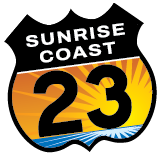- Kayaking on Lake Huron is not suited for beginner and inexperienced paddlers.
- Always kayak with a group. Three boats is a recommended minimum. Make sure there are experienced paddlers in every group.
- Take a kayak safety and paddling class. Obtain the knowledge, skills and ability necessary for kayaking and canoeing.
- Determine weather conditions for the days you’ll be on the water, storms and heavy seas on Lake Huron are dangerous.
- Do your pre-paddle homework; choose a route that fits your abilities, identify access sites, and know the water.
- Experience. Match your experience to the conditions. Err on the side of caution. The greater your training and paddling experience the greater the range of conditions you should be able to handle with relative safety.
- Dress for immersion. Hypothermia is a major factor in many kayaking deaths. Know the water temperature before you start paddling and use a wetsuit or dry suit as appropriate. Layering using synthetics like fleece and having a warm hat is important in cooler conditions.
- Match kayak to conditions. A recreational kayak with no built-in buoyancy is not suitable for big waters just like a sea kayak is risky in strong whitewater conditions where a nimble boat is required. Know the conditions for which your kayak was designed and respect those limits.
- File a float plan with friends, family, or the authorities.
- Always wear a U.S. Coast Guard approved life jacket. Your personal flotation device should be highly visible, adjust to accommodate different clothing weights and allow free arm movement. It should also be comfortable enough to wear zipped anytime you’re on the water.
- Be visible - wear bright colors so others can see you between waves or in the fog. Carry a bright light, flares, and whistle to signal your position.
- Spray skirt. A spray skirt seals you inside the kayak. One end fits around your waist, and the other end attaches to the cockpit coaming. Although not completely waterproof, a spray skirt keeps water out of the cockpit, protects your legs from the sun and keeps you warm in cold weather.
- Bilge pump. A hand-operated bilge pump can help you remove water from your boat. Make sure it has a float collar so it won’t sink.
- Paddle float and rescue sling. An inflatable bladder that slips over a paddle blade, a paddle float provides flotation and support when you re-enter your boat from the water. A rescue sling is a piece of floating line made into a loop with double fisherman’s knots. It’s useful for rigging a stirrup to give you a boost as you climb back into the cockpit.
- Spare paddle and paddle leash.
- Signaling devices. You’ll need a variety of sound and visual signals for day and night use. Your stash should include a waterproof flashlight, whistle, flares, strobes, smoke canisters, dye markers and signaling mirrors.
- Bring appropriate safety, rescue, and navigational aids and more than adequate food, water, and extra protective clothing. Do not wear cotton!
- VHF radio and cell phone. A VHF radio lets you put out a distress call to the Coast Guard and nearby boaters. A cell phone is best for staying in touch with people on shore. (Note: Cell phones are not a reliable means of communication when paddling on the water. Most are not waterproof, difficult to dial when in an emergency situation and it only communicates to one person. VHF radios are much easier to use, and communicate with everyone monitoring that channel within range.) If you are taking along a cell phone, be sure to use a recommended small water tight bag.
- Be comfortable in the water, out of your boat.
- Know how to get out and back in your kayak. There are techniques for getting back into your kayak by yourself or with the help of another paddler. Learn them and practice them. Get comfortable with tipping over, popping your sprayskirt and getting out of your cockpit efficiently. Don't let go of your kayak once you are in the water.
- Know how to self-rescue. Practice! Practice! Practice!
- Pick an activity level that matches your ability and progress to more demanding challenges.
- Fuel and water. Keep yourself well fed and watered while paddling. Dehydration and hunger weaken you physically and impair your judgment. Eat and rehydrate at least once every 90 minutes.
- Monitor your physical and emotional condition, and watch the other members or your group for fatigue, illness, and changes in behavior.
Safety Sources
Commander Bob’s web site http://www.commanderbob.com/
Chicago Area Sea Kayakers Association http://www.caska.org/
Other Sites
http://www.kayakhelp.com/kayaking-safety.php
http://www.americancanoe.org/?page=Top_10
Paddling 101 ACA
https://aca.site-ym.com/resource/resmgr/sei-educational_resources/paddling_101-aca.pdf
Beginners Guide ACA
https://aca.site-ym.com/resource/resmgr/sei-educational_resources/beginners_guide_aca.pdf

